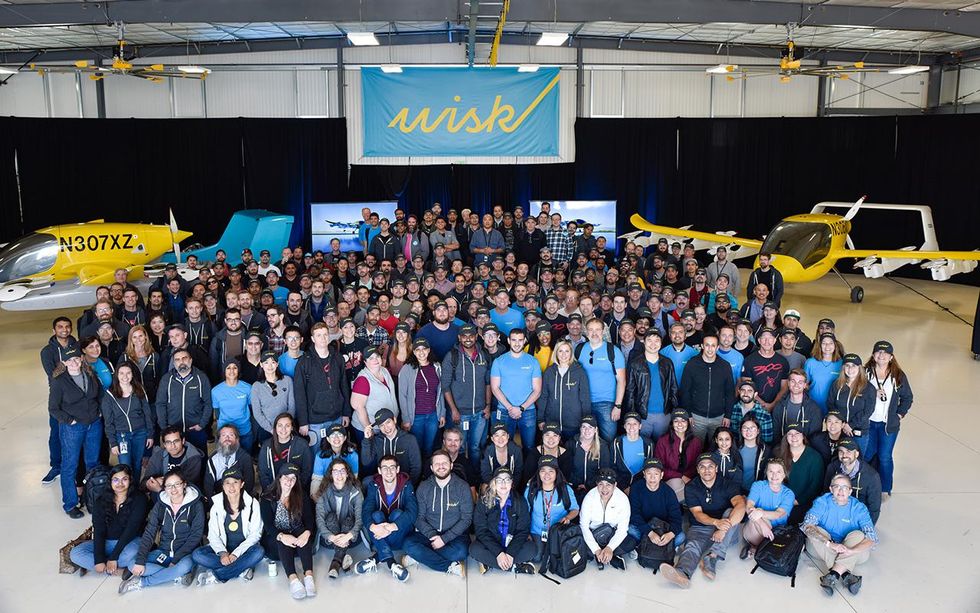How Los Angeles Ports Are Decarbonizing Shipping with Hydrogen Fuel Cells and Battery Electric Tech
Back in 2017, the Ports of Los Angeles and Long Beach announced plans to go zero emissions. The pledge, which built on the ports’ 2006 clean air goals, was an ambitious one, and officials estimated the cost of eliminating air pollution could reach $14 billion. Still, the plan, which involves transitioning to zero-emission terminal equipment by 2030 and zero-emission trucks by 2035, represented a critical step in the fight against climate change.
Six years later, there’s been progress.
The ports recently established a clean truck fund, which introduces a fee for cargo owners operating internal combustion drayage vehicles at the ports. In 2021, Los Angeles city council adopted a resolution asking major importers to transition to zero-emission vehicles by the end of the decade. The ports have also agreed to collaborate with ports in Asia on a Green Shipping Corridor, which pushes for the use of low and zero-emission fuels along major trade routes. The nearly a hundred shoreside cranes at the Port of LA are powered by electricity.
But one of the primary decarbonization strategies the ports have pursued is incubating new technologies. The ports have essentially turned themselves into development platforms for new shipping tech—devoting time, space, and money toward companies and projects that focus on zero-emission vehicles and port infrastructure. The idea is to play a role in developing the tools that could eventually help the port complex reach its environmental goals.
“Our view is: the sooner you deploy it, obviously, the sooner you get emissions reductions,” says Chris Cannon, the chief sustainability officer at the Port of Los Angeles. “The sooner we get that stuff deployed and out there, the sooner you learn those lessons, and the sooner you get the next generation”
The stakes are high. These hurdles are a reminder of how hard, but incredibly important, going zero-emissions at the ports truly is. Together, the Ports of LA and Long Beach represent the largest port complex in the United States, and take in around 29 percent of the goods that travel to and from the country via water every year. All this activity means that the ports represent a significant chunk of the US economy, but a significant source of carbon emissions, too.
There is already a wide range of technology under investigation.
Fenix Marine Services is currently conducting a nearly $12 million test to understand the efficacy of a battery-electric and hydrogen fuel-powered top handler — a port vehicle that’s used to load shipping containers. There’s also AtlaSea, a nonprofit accelerator that supports blue economy startups based at the Port of Los Angeles, which recently installed thousands of solar panels to power its facilities and hundreds of homes nearby.
This strategy has some real caveats. While the port has taken a range of steps to test emergent technologies, these systems still need to work — and then be deployed on a wide scale. And while the ports can take action to encourage companies to use new green technologies, those companies aren’t necessarily eager to invest in infrastructure that’s better for the environment.
“Some of the biggest contributors are actually the ships that are calling at the port, and then what we would call harbor craft, like ferries and tugs that are spending a lot of their time in the port,” explains Bryan Comer, the marine program lead at the International Council on Clean Transportation, a nonprofit that produces transportation-focused environmental analyses. “You end up having, on the land side, these pollution hotspots and hot corridors where you have older trucks that have higher emissions.”
Right now, one possible way to cut down on the emissions created by ports is to deploy battery electric technology, explains Comer, in part because it’s already been deployed. The Southern California ports have reached some milestones on this front. Cannon says there are already about 80 electric trucks registered to do business within the port, and the Port of Los Angeles has agreed to invest $6 million toward 22 more electric trucks for the port. With the help of federal and state funding and other incentives — like the new fee for internal combustion engines — the hope is to get 4,000 electric trucks over the next five to six years.
But in some cases, replacing these vehicles with battery electric cars isn’t the right solution.
The Ports of Los Angeles and Long Beach are also looking at hydrogen fuel cell technology. Hydrogen fuel technology works somewhat like a battery, but emits water, and could be particularly helpful for vehicles that need to carry heavier cargo or cargo that needs to travel longer distances. For this reason, the port doesn’t want to limit itself to battery-electric technology, and instead wants to focus on the broader idea of reducing carbon emissions.
“We always say, ‘going zero-emissions and not ‘electrify,’” says Cannon. “We're completely fuel neutral [...] There may be another technology or two that somebody figures out over the years here that also allows you to have zero emissions.”
An $82.5 million program called Shore to Store, which involves demonstrating two hydrogen fueling stations and 10 hydrogen trucks, finished up last month. The container terminal operator TraPac tested two yard tractors powered by hydrogen fuel cells last year — final results of the test are pending. With more than $17 million from the Japanese government, the terminal operator YTI is testing several types of hydrogen-powered equipment at the port, including a yard tractor, a crane, and a top handler. Initial deployment is expected in 2024.
Overall, the port has about 16 technology demonstrations in process, which collectively reflect about 200 pieces of equipment. More funding could come from the Infrastructure Investment and Jobs Law, as part of California’s bid to become a clean hydrogen hub.
Other incubators are also active at the ports.
Pacific Environment, the environmental advocacy organization, announced that it would partner with the venture advisory Braid Theory, on a zero-emissions shipping accelerator that will be based at the Port of LA. AltaSea also focuses, in part, on green maritime technology.
This past February, for example, ACUA Ocean — a company developing an uncrewed, hydrogen-powered vessel — announced a memorandum of understanding with AltaSea, as well as plans to demonstrate its tech at the port.
A company called Ecowave is developing technology to generate electricity from waves, which could eventually be used to power port infrastructure. The company is currently using AltaSea to demonstrate its technology and working on the permits and licensing necessary to expand further.
“Ports require a tremendous amount of electricity for their operations,” explains Inna Braverman, the co-founder and CEO of EcoWave. “By being able to power ports with ocean energy, that will help lower port operations footprint.”
Of course, these efforts face real headwinds.
Some of the ports’ demonstrations haven’t run on time or produced promising results. More broadly, logistical problems and supply chain woes at the ports have undermined some of the improvements on air quality thus far.
One estimate from the California Air Resources Board, the state agency that focuses on protecting air quality, found that the surge in container ships triggered by pandemic-era supp;y chain issues created severe air quality issues, including increases in particulate matter and oxides of nitrogen.
And while tech might be part of the solution, it won’t be enough on its own. For example, the National Resources Defense Council has continued to criticize the ports’ approach to air quality, an issue that disproportionately impacts the neighborhoods nearby and disproportionately impacts communities of color and low-income communities. Three years ago, the organization, along with others, successfully sued the Port of Los Angeles for failing to follow environmental laws when negotiating a leasing agreement with China Ocean Shipping Company.
“To demonstrate the ports’ commitments to these goals, the ports must commit to ending all new, renewed or expanded fossil fuel infrastructure on port property,” said says Allyson Browne, Climate Campaign Director for Ports, Pacific Environment, an environmental organization pushing for zero-emissions at the ports. “The math is crystal clear – we simply don’t have the carbon budget for any new fossil fuel infrastructure.”
- Braid Theory's Plan to Foster the Next Generation of Ocean Tech Startups ›
- Inside the 'Aggressive' Goal to Make LA Port Ships 100% Zero Emission ›
- Xos Launches a Mobile Charging Station For Electric Truck Fleets ›



 Image courtesy of Wisk Aero
Image courtesy of Wisk Aero